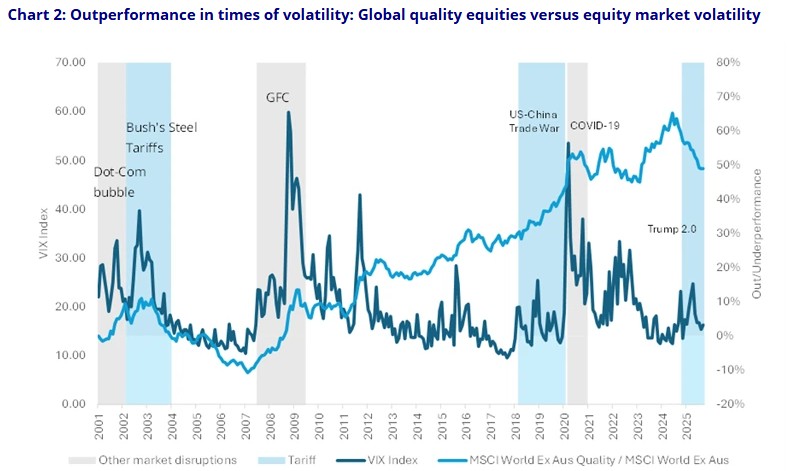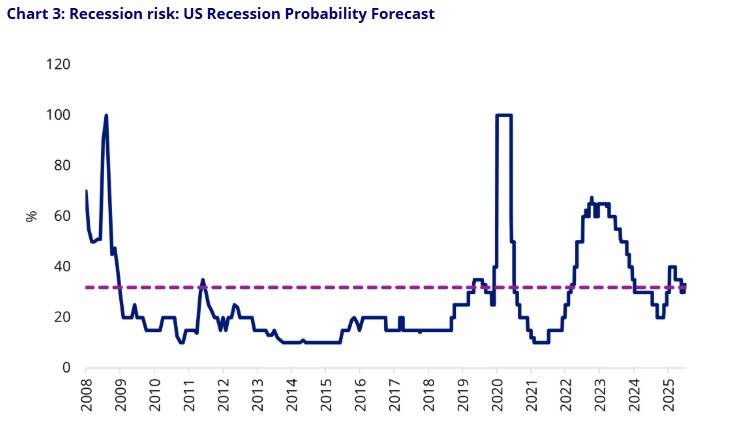Market volatility won't fade quickly. Here's what outperformed in every crisis since 1994
The protectionist policies implemented by President Trump have had an immediate impact on markets upon their announcement. Most recently, when Trump declared that he would impose an additional 100% tariff on Chinese goods from November 1 in response to what he called "extraordinarily aggressive" new export curbs on China's rare-earth industry, volatility spiked. You can also see it spiked after ‘Liberation Day’ earlier in the year.
These are volatility levels not seen since the COVID lockdowns.
It’s worth noting that when spikes of the magnitude experienced earlier this month occur, volatility rarely dissipates immediately; rather, it typically takes years for it to ease. This is because, while the outcome of the trade wars is not known, we do know that tariffs have the impact of raising prices, which in turn slows spending.
In our last ViewPoint, 'The Selective Path,' we explained that the evidence indicated the costs of the anti-China tariffs in the trade war during Trump’s first Presidency were borne by US companies and US consumers (over 90%). And so far, at least, with the latest round of tariffs, the evidence is no different.
The other dynamic in the US is its labour force, and the numbers recently have not been strong.
An economic slowdown is predicted. What this means, we think, is that we are headed for a period of equity market volatility, as participants confront the impact of rising inflation and economic weakness.
The ‘flight to quality’
In the past, the quality factor has outperformed during periods of heightened volatility and periods of stagflation.
You may have heard the phrase ‘flight to quality’. This occurs when market risks are pronounced and investors choose quality over non-quality assets to manage the storm. Over the past 30 years, you can see flights to quality in action. The index that VanEck MSCI International Quality ETF (QUAL) tracks, the MSCI World ex Australia Quality Index, has been calculated by MSCI back to 1994, so its history includes the volatility spikes of dotcom, the GFC and the recent COVID crisis. In the chart below, when the light blue line is rising, quality has outperformed. You can see that in each of the previous times the volatility index (VIX) has spiked significantly, quality has outperformed. It has also outperformed since Liberation Day.

The market capitulations in 2000, 2008-2009 and 2020 were followed by economic slowdowns, with recessions following each of these stock market falls.
While not every pundit is calling a recession following Trump’s tariffs announcements and subsequent 90-day reprieve, a slowdown may be the base case.

Historically, quality companies have lost less and recovered faster during periods associated with market falls and deteriorating economic conditions. In the table below, we have highlighted the dot-com bubble, GFC and the COVID-19 market meltdown. In all these episodes, quality international companies lost less and recovered faster. The table below compares the drawdowns of the MSCI World ex Australia Quality Index versus the market benchmark, MSCI World ex Australia Index.



2 topics
2 stocks mentioned
2 funds mentioned

